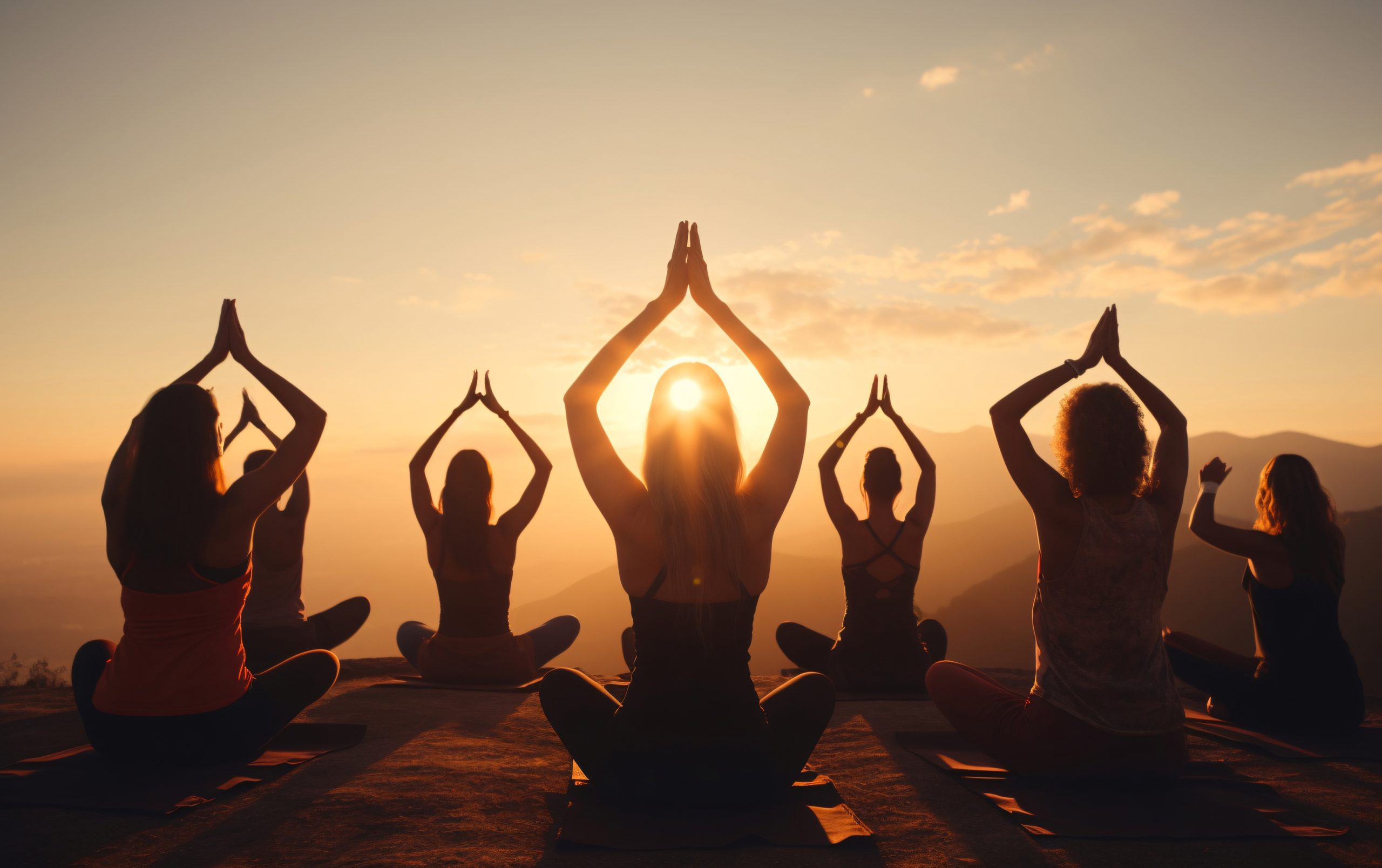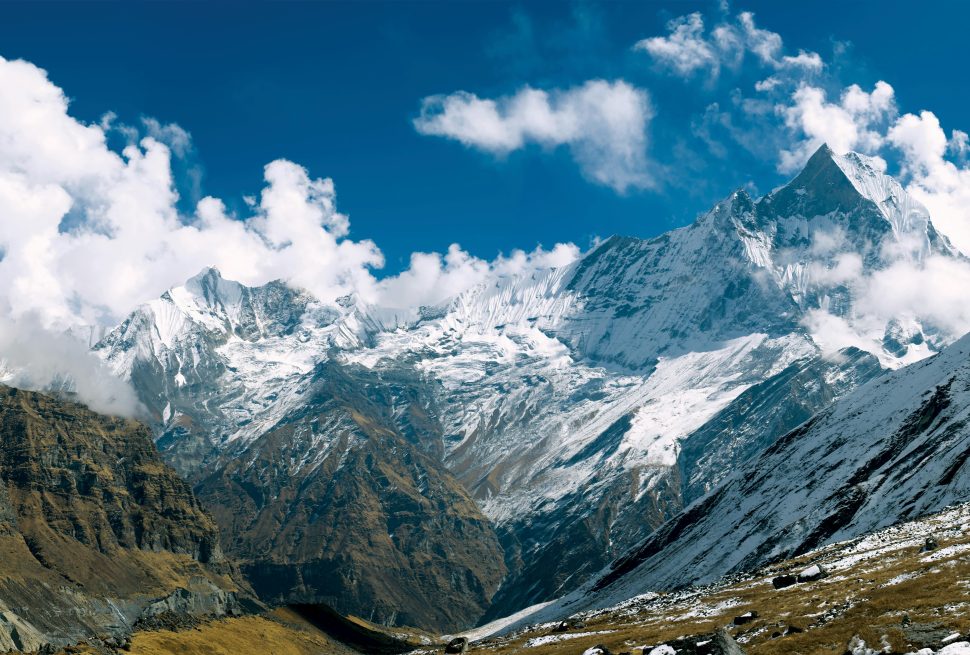Yoga Healing Session in Kathmandu Valley offers a rare opportunity to reconnect with yourself in one of the world’s most breathtaking and spiritually rich landscapes. This experience goes beyond yoga postures, integrating a holistic approach to achieve physical, mental, and spiritual well-being. Set against the majestic Himalayas, Kathmandu Valley provides the perfect backdrop for this journey. Sessions often include sound healing techniques, using resonant frequencies to enhance relaxation and inner harmony. This guide delves into the origins and techniques of yoga healing, the enchanting environment of Kathmandu Valley, and the extensive benefits, including the transformative effects of sound healing.
Understanding Yoga Healing
Yoga healing is a comprehensive practice that combines traditional yoga with other holistic techniques to foster overall well-being. To grasp the full scope of yoga healing, it’s important to understand its origins, philosophical foundations, and the key techniques involved.
Origins of Yoga Healing
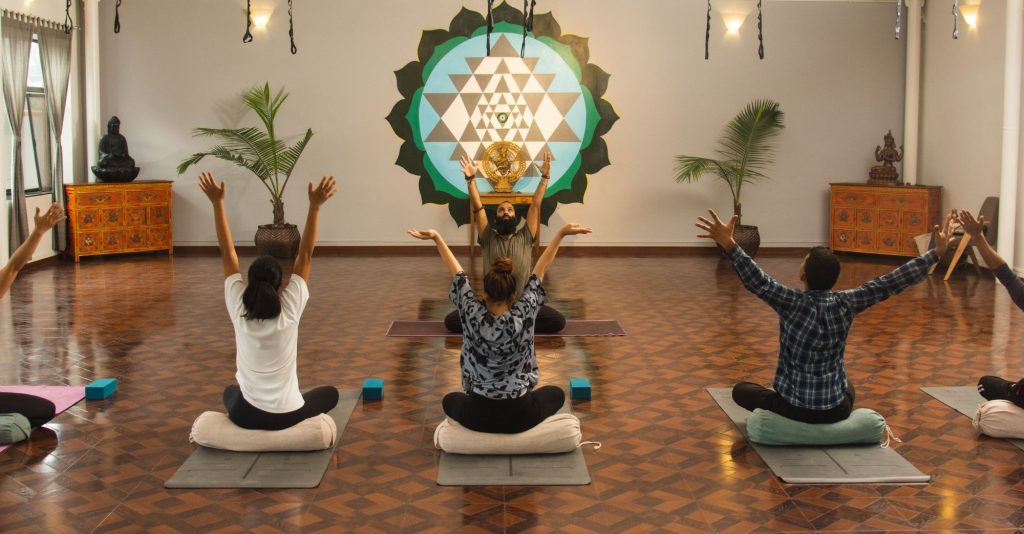
Yoga healing’s origins trace back to ancient practices that have been refined over thousands of years. Yoga, which originated in India, has been valued for its physical and spiritual benefits since ancient times. Early yogic texts, such as the Vedas and Upanishads, described practices aimed at achieving balance within the body and mind. Over centuries, these practices have evolved to include a variety of healing techniques.
The modern concept of yoga healing integrates physical postures with breathing exercises, meditation, and holistic approaches like Ayurveda. This integration addresses the full spectrum of human health, aiming not just at physical fitness but also mental clarity, emotional stability, and spiritual growth.
Philosophical Underpinnings
The philosophical framework of yoga healing is rooted in several key concepts:
– Mind-Body Connection: Yoga healing emphasizes the interconnectedness between mind and body. It recognizes that mental and emotional states have a direct impact on physical health and vice versa.
– Energy Flow: Central to yoga healing is the concept of prana, or life energy, which is believed to flow through channels called nadis. Blockages or imbalances in this energy flow can lead to both physical and emotional issues.
– Holistic Approach: Yoga healing takes a holistic perspective, treating the individual as a whole rather than focusing on isolated symptoms. This approach integrates physical practices with mental and spiritual elements to achieve comprehensive wellness.
Understanding these foundational aspects of yoga healing enhances your ability to fully engage in and benefit from a yoga healing session in Kathmandu Valley.
Enchanting Kathmandu Valley
Kathmandu Valley is renowned for its natural beauty and cultural richness, making it an ideal setting for a yoga healing session. To truly appreciate why this region is so special, let’s explore its geographical wonders, cultural heritage, and spiritual atmosphere.
Geographical Wonders
Kathmandu Valley is surrounded by lush hills and majestic mountains, creating a stunning natural environment that enhances the yoga healing experience. The valley’s geographical features contribute to a profound sense of tranquility and connection with nature.
Notable landmarks include:
– Swayambhunath (Monkey Temple): This ancient stupa, perched atop a hill, offers panoramic views of the valley and is a place of significant spiritual importance. The serene environment and spiritual energy make it a perfect location for contemplation and meditation.
– Patan Durbar Square: Renowned for its intricate architecture and rich cultural heritage, Patan Durbar Square is a historic site that reflects the valley’s artistic and architectural prowess.
– Bhaktapur Durbar Square: Known for its well-preserved medieval architecture and traditional Newari culture, Bhaktapur Durbar Square provides a glimpse into the valley’s historical and cultural evolution.
These landmarks not only offer picturesque views but also contribute to the spiritual ambiance of the region, enriching your yoga healing session with their historical and cultural significance.
Cultural Richness
Kathmandu Valley is a melting pot of diverse cultures and traditions. This cultural richness is reflected in:
– Festivals: The valley celebrates numerous festivals throughout the year, such as Dashain and Tihar. These festivals showcase vibrant traditions, communal spirit, and cultural festivities that add a unique flavor to your experience.
– Traditional Arts and Crafts: The region is famous for its traditional crafts, including intricate wood carvings, pottery, and textiles. Engaging with these arts provides a deeper appreciation of the valley’s cultural heritage.
– Cuisine: Nepali cuisine offers a variety of flavors and dishes, including momo (dumplings) and dal bhat (lentil soup with rice). Sampling local cuisine adds a delightful culinary dimension to your visit.
Immersing yourself in this cultural richness can enhance your yoga healing experience, fostering a deeper connection with the local context and traditions.
Spiritual Atmosphere
Kathmandu Valley’s spiritual atmosphere is deeply intertwined with its history and culture. The valley has been a center of spiritual practices for centuries, attracting seekers from around the world.
Key aspects of its spiritual atmosphere include:
– Temples and Stupas: The valley is dotted with temples and stupas that serve as focal points for meditation and reflection. These sacred spaces contribute to the region’s spiritual energy and offer a supportive environment for your yoga healing session.
– Yoga and Meditation Retreats: Numerous retreats and centers in the valley offer specialized programs in yoga and meditation. These programs draw on the valley’s spiritual heritage to guide practitioners on their journey.
– Local Spiritual Practices: Traditional practices, such as prayer flags and rituals, are prevalent throughout the valley. These practices contribute to the region’s spiritual ambiance and create a supportive environment for your yoga healing experience.
The spiritual environment of Kathmandu Valley provides a rich backdrop for a yoga healing session, helping you connect with your inner self and fostering a sense of inner peace.
What to Anticipate in a Yoga Healing Session
A Yoga Healing Session in Kathmandu Valley offers a holistic experience that encompasses various stages and activities.
Here’s a detailed look at what you can expect:
Pre-Session Preparation
Preparing for a yoga healing session involves several important steps:
– Research and Selection: Choose a yoga healing center that aligns with your needs and preferences. Look for centers that offer comprehensive programs and have experienced instructors. Researching various options ensures you find a center that provides a well-rounded and effective yoga healing experience.
– Setting Intentions: Reflect on your goals and intentions for the session. Whether you seek stress relief, physical rejuvenation, or spiritual growth, setting clear intentions can enhance your experience and help you achieve your desired outcomes.
– Practical Arrangements: Ensure you have all necessary items, such as comfortable clothing, a yoga mat, and personal toiletries. Familiarize yourself with the center’s guidelines and schedule to ensure a smooth and enjoyable experience.
Proper preparation sets the stage for a successful yoga healing session and allows you to fully engage with the experience.
During the Session
A typical yoga healing session in Kathmandu Valley is structured to provide a well-rounded experience:
– Introduction and Orientation: Sessions usually begin with an introduction and orientation where the instructor explains the program’s objectives and outlines the schedule. This phase helps you understand what to expect and prepares you for the upcoming activities.
– Physical Practice: This includes a series of asanas (postures) designed to address specific physical and emotional needs. The practice is often adapted to accommodate individual abilities and conditions, ensuring that it meets your unique requirements.
– Breathing Exercises: Pranayama techniques are incorporated to regulate energy flow and enhance mental clarity. These exercises may include various forms of controlled breathing, helping to balance and center your energy.
– Meditation and Relaxation: Guided meditation sessions help to calm the mind and foster a deep sense of inner peace. Relaxation techniques may also be used to help integrate the benefits of physical practice and promote overall well-being.
Each stage of the session is designed to contribute to your overall wellness, addressing both physical and mental aspects of health.
Post-Session Reflection
After the session, reflection and integration are important components:
– Debriefing: Many centers offer a debriefing session where participants can discuss their experiences, ask questions, and receive feedback from the instructor. This phase provides an opportunity to process your experience and gain insights.
– Self-Care: Engage in self-care practices such as journaling or gentle stretching to integrate the benefits of the session. Taking time to relax and reflect on the experience supports the assimilation of the healing effects.
– Follow-Up: Consider discussing any insights or changes with the instructor. Some centers offer follow-up sessions or additional resources to support your continued journey and ensure you maintain the benefits of the yoga healing session.
Reflecting on and integrating the experience helps to solidify the benefits and supports your ongoing well-being.
Core Techniques in Yoga Healing
A Yoga Healing Session incorporates a range of techniques that work together to promote overall well-being. Each technique plays a specific role in addressing different aspects of health.
Asanas (Postures)
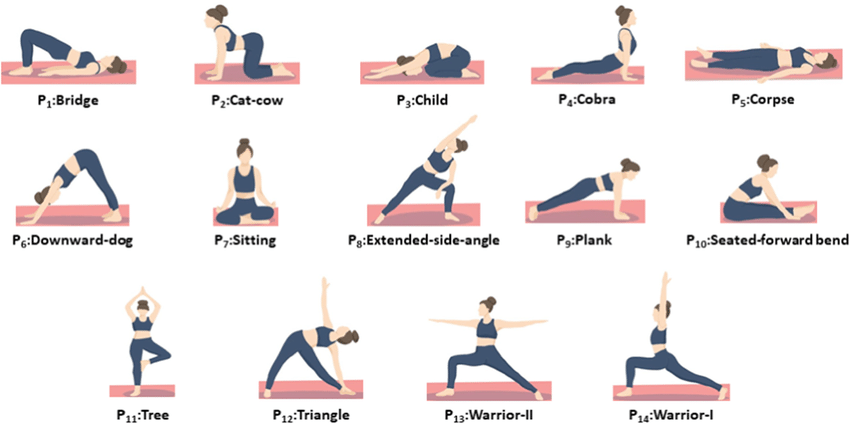
Asanas are the physical component of yoga healing. They involve a series of postures designed to improve flexibility, strength, and balance. Here’s a closer look at some common types of asanas used in yoga healing:
– Hatha Yoga Postures: These are foundational postures that focus on alignment and balance. Examples include Downward Dog (Adho Mukha Svanasana) and Warrior Pose (Virabhadrasana). These postures help to build strength and improve overall physical health.
– Restorative Postures: These postures are designed to promote relaxation and recovery. Examples include Child’s Pose (Balasana) and Legs-Up-the-Wall Pose (Viparita Karani). Restorative postures help to reduce stress and promote a sense of calm.
– Therapeutic Postures: These are tailored to address specific issues, such as back pain or anxiety. Techniques may include gentle stretches and supported poses that target specific areas of discomfort or tension.
Each asana is selected to address particular needs and contribute to overall physical and emotional well-being.
Pranayama (Breathing Exercises)
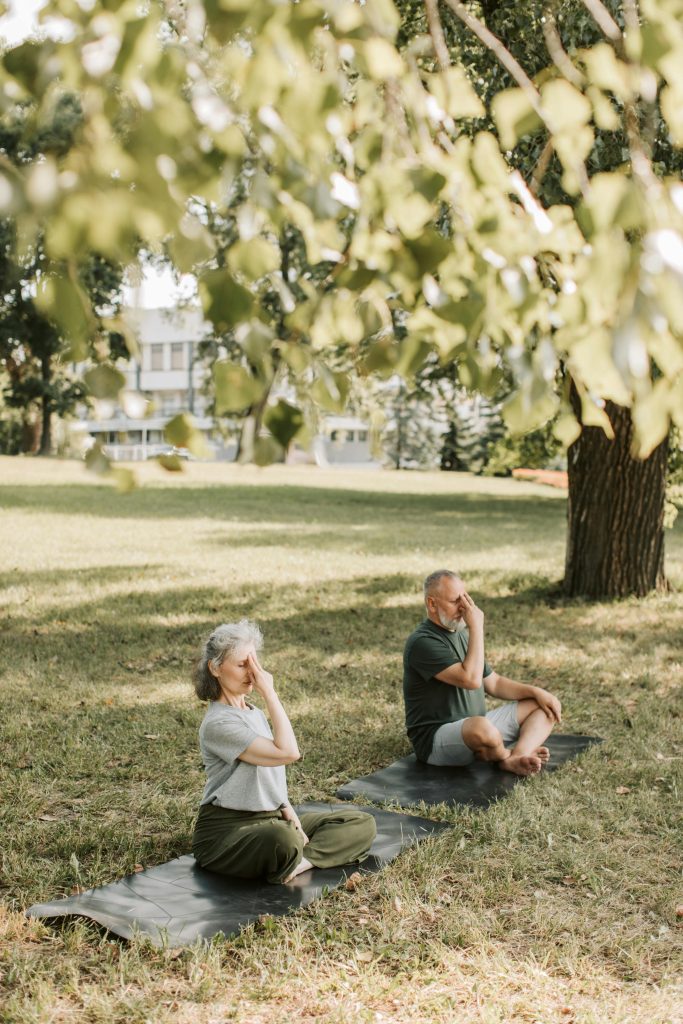
Pranayama involves controlling the breath to influence energy flow and mental state. Different types of pranayama techniques are used to achieve various effects:
– Kapalabhati (Skull Shining Breath): This technique involves rapid, forceful exhalations followed by passive inhalations. It is used to energize the body and clear mental fog. Kapalabhati stimulates the digestive system and increases mental focus.
– Nadi Shodhana (Alternate Nostril Breathing): This technique involves breathing through alternate nostrils to balance energy flow and reduce stress. Nadi Shodhana helps to calm the nervous system and promote mental clarity.
– Ujjayi (Victorious Breath): This technique involves breathing through the nose with a slight constriction in the throat, creating a calming effect and enhancing focus. Ujjayi breath is often used during asana practice to maintain concentration and control.
Pranayama is a key component of yoga healing, helping to regulate energy and promote mental clarity.
Meditation Practices
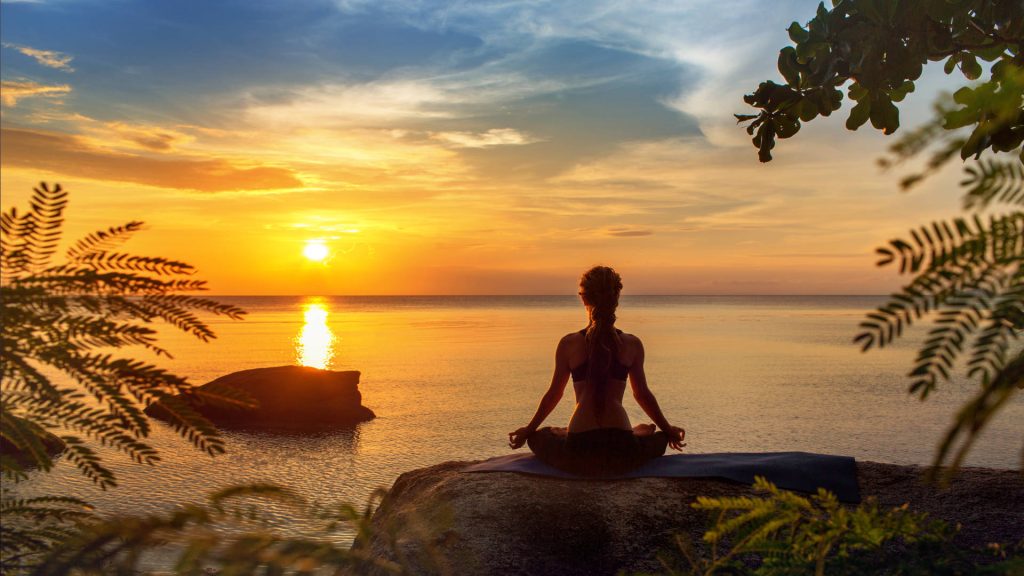
Meditation is integral to yoga healing, providing a means to cultivate inner peace and self-awareness.
Common meditation practices include:
– Mindfulness Meditation: This practice involves focusing on the present moment and observing thoughts and sensations without judgment. It helps to enhance self-awareness and reduce stress. Mindfulness meditation supports emotional regulation and mental clarity.
– Guided Visualization: This technique involves imagining a peaceful scene or scenario, guided by an instructor or recorded script. It promotes relaxation and mental clarity. Guided visualization can help to reduce anxiety and foster a sense of calm.
– Loving-Kindness Meditation (Metta): This practice involves sending feelings of love and compassion to oneself and others. It fosters emotional resilience and empathy, contributing to overall emotional well-being.
Meditation helps to integrate the benefits of physical practices and promotes overall emotional and mental well-being.
Ayurvedic Treatments
Ayurveda, the ancient system of medicine from India, complements yoga healing by addressing individual dosha imbalances.
Key Ayurvedic treatments include:
– Dietary Recommendations: Ayurveda suggests specific dietary guidelines based on individual dosha types. These guidelines help to balance the body’s internal environment and support overall health. A balanced diet tailored to your dosha can enhance physical and mental well-being.
– Herbal Remedies: Ayurvedic herbs and supplements are used to address specific health concerns and support overall well-being. Common herbs include Ashwagandha for stress relief and Turmeric for inflammation. Herbal remedies can enhance the effects of yoga healing and support overall health.
– Lifestyle Adjustments: Ayurveda emphasizes lifestyle practices such as daily routines, sleep hygiene, and stress management. These practices promote balance and health, complementing the benefits of yoga healing.
Integrating Ayurvedic practices with yoga healing provides a comprehensive approach to wellness, addressing both physical and holistic needs.
Benefits of Yoga Healing in Kathmandu
Participating in a Yoga Healing Session in Kathmandu Valley offers numerous benefits that extend beyond the physical. Here’s an in-depth look at the benefits of yoga you can expect:
Physical Benefits
Yoga healing provides a range of physical benefits, including:
– Improved Flexibility: Regular practice of asanas enhances flexibility in muscles and joints, reducing stiffness and improving range of motion. Increased flexibility contributes to overall physical health and reduces the risk of injury.
– Increased Strength: Yoga postures help to build and tone muscles, contributing to overall physical strength and stability. Increased strength supports daily activities and promotes overall well-being.
– Enhanced Balance: Asanas that focus on balance improve coordination and stability, reducing the risk of falls and injuries. Improved balance contributes to physical stability and overall health.
– Pain Relief: Yoga healing can help alleviate chronic pain conditions such as back pain, arthritis, and headaches through targeted postures and stretches. Pain relief supports overall comfort and quality of life.
Mental Benefits
Yoga healing offers significant mental benefits, including:
– Stress Reduction: Pranayama and meditation techniques help to manage stress and promote relaxation, reducing the impact of daily pressures. Effective stress management contributes to overall mental well-being.
– Enhanced Focus: Meditation practices improve concentration and mental clarity, helping to sharpen cognitive function and productivity. Enhanced focus supports effective functioning in daily life.
– Emotional Resilience: Yoga healing fosters emotional stability and resilience, helping individuals navigate challenging emotions and situations. Emotional resilience contributes to overall mental health and well-being.
Emotional Benefits
Yoga healing supports emotional well-being in several ways:
– Increased Self-Awareness: The practice of meditation and mindfulness enhances self-awareness, helping individuals understand and manage their emotions more effectively. Increased self-awareness supports emotional regulation and personal growth.
– Improved Mood: Regular practice of yoga and meditation can boost mood and promote a sense of happiness and contentment. An improved mood contributes to overall emotional well-being.
– Emotional Healing: Yoga healing can assist in processing and releasing unresolved emotions, contributing to overall emotional health and healing. Emotional healing supports personal growth and well-being.
Spiritual Benefits
Yoga healing can also facilitate spiritual growth and connection:
– Deepened Self-Connection: The practice encourages introspection and self-discovery, fostering a deeper connection with one’s inner self. A deeper self-connection supports spiritual growth and personal development.
– Spiritual Awakening: Engaging in yoga and meditation in a spiritually rich environment like Kathmandu Valley can facilitate spiritual awakening and personal growth. Spiritual awakening promotes a sense of purpose and fulfillment.
– Enhanced Sense of Purpose: The holistic approach of yoga healing helps individuals align with their values and sense of purpose, promoting a fulfilling and meaningful life. An enhanced sense of purpose contributes to overall well-being and satisfaction.
Choosing the Ideal Yoga Healing Center
Selecting the right yoga healing center in Kathmandu Valley is crucial for a successful and enjoyable experience. Here’s how to choose the ideal center and some top recommendations:
What to Look For?
When choosing a yoga healing center, consider the following factors:
– Qualified Instructors: Look for centers with experienced and certified instructors who offer personalized attention and guidance. Instructors should have a strong background in yoga and healing practices, ensuring high-quality instruction and support.
– Comprehensive Programs: Choose centers that offer well-rounded programs incorporating asanas, pranayama, meditation, and Ayurvedic practices. A holistic approach ensures that all aspects of wellness are addressed.
– Serene Environment: The center should be located in a peaceful and natural setting, enhancing the healing experience. A serene environment supports relaxation and overall well-being.
– Positive Reviews: Research reviews and testimonials from previous participants to gauge the quality and effectiveness of the center’s programs. Positive feedback provides insights into the center’s reputation and the experiences of others.
Top Yoga Healing Centers in Kathmandu Valley
If you’re seeking a transformative yoga healing experience in Kathmandu Valley, consider these renowned centers known for their unique approaches and serene environments:
– Manasukh Yoga Retreat:
Manasukh Yoga Retreat is celebrated for its holistic approach to wellness, integrating traditional yoga practices with personalized healing programs. What sets Manasukh apart is its unique combination of yoga healing session and trekking experiences. Participants can immerse themselves in revitalizing yoga sessions while exploring the stunning natural beauty of the Himalayan foothills. The retreat’s serene environment and experienced instructors provide a deeply rejuvenating experience, focusing on both physical and spiritual well-being.
-Nepal Yoga Home:
Nepal Yoga Home offers a comprehensive approach that combines yoga, Ayurveda, and meditation to address individual needs. With its experienced instructors and peaceful setting, this center creates an enriching environment for holistic healing and personal growth. The center’s well-rounded programs are designed to promote overall wellness and balance, catering to both newcomers and experienced practitioners alike.
– Osho Divine Zone:
Osho Divine Zone provides a blend of yoga, meditation, and spa treatments. Known for its serene ambiance and diverse offerings, it focuses on both physical relaxation and mental clarity. The center’s tranquil environment and specialized treatments make it an ideal choice for those looking to unwind, rejuvenate, and achieve a harmonious balance in their lives.
– Paradise Spa:
Paradise Spa offers a range of spa treatments alongside yoga practices. With a focus on relaxation and well-being, it provides a tranquil setting to indulge in both yoga and spa therapies for a complete healing experience. The combination of luxurious spa services and yoga practices ensures a holistic approach to relaxation and rejuvenation.
These centers offer a variety of programs and environments to cater to different needs and preferences, ensuring a fulfilling yoga healing journey in Kathmandu Valley.
Preparation Tips for Your Yoga Healing Session Journey
To ensure a successful and enjoyable yoga healing experience, consider the following preparation tips:
Mental Preparation
– Set Clear Intentions: Reflect on your goals and reasons for participating in the yoga healing session. Setting clear intentions will help you stay focused and make the most of the experience. Having specific goals in mind enhances the effectiveness of the session.
– Cultivate an Open Mind: Approach the session with an open mind and willingness to embrace new practices and perspectives
Flexibility in your mindset can enhance the benefits of the experience. An open mind supports personal growth and adaptation.
Physical Preparation
– Stay Hydrated: Drink plenty of water before and after the session to support physical health and hydration. Proper hydration enhances overall well-being and supports the body’s healing process.
– Wear Comfortable Clothing: Choose comfortable, breathable clothing that allows for freedom of movement during yoga practice. Wearing appropriate attire ensures comfort and ease during the session.
– Avoid Heavy Meals: Try to avoid heavy meals before the session to ensure comfort and prevent any digestive discomfort during practice. Eating light, nutritious meals supports optimal performance and comfort.
Cultural Sensitivity
– Respect Local Customs: Be aware of and respect local customs and traditions. Understanding the cultural context of Kathmandu Valley will enhance your experience and show respect for the local community. Respect for local customs fosters positive interactions and enriches your experience.
– Embrace the Environment: Allow yourself to fully engage with the natural and spiritual environment of the valley. Take time to explore the local area and appreciate its beauty and significance. Immersing yourself in the environment enhances the overall experience and connection with the surroundings.
Conclusion
A Yoga Healing Session in Kathmandu Valley is a profound journey towards holistic well-being, offering a unique blend of physical, mental, emotional, and spiritual benefits. The combination of expert guidance, serene surroundings, and a holistic approach creates an enriching experience that can lead to lasting transformation. Whether you seek stress relief, physical rejuvenation, or spiritual growth, Kathmandu Valley provides the perfect setting for this transformative journey.
Feel free to reach out for more details and start your journey towards wellness in the enchanting Kathmandu Valley.

